Abstract
Sakaguchi, Genji (National Institute of Health, Tokyo, Japan), Sumiko Sakaguchi, and Nobuko Imai. Comparative gel filtration of toxin grecursor and trypsin-activated toxin of Clostridium botulinum type E. J. Bacteriol. 87:401–407. 1964.—Precursor of type E botulinus toxin was highly purified from bacterial cells by extraction, ammonium sulfate precipitation, ribonuclease digestion, and chromatography on CM-Sephadex. The sample free from ribonucleic acid had a toxicity of 5.1 × 105ld50 per mg of nitrogen before activation and 8.3 × 107ld50 per mg of nitrogen after activation. This precursor and its activated product were subjected to gel filtration on a column of Sephadex G-200. No evidence for smaller fractions was obtained. Both precursor and trypsin-activated toxin were eluted in the void volume with 0.05 or 1 m acetate buffer (pH 6.0) or with 0.05 or 0.5 m phosphate buffer (pH 7.5). Intact trypsin and its degradation products were separated from toxin. The toxins eluted with the acetate buffers had potencies of 1.2 × 108 and 1.3 × 108ld50 per mg of N, while those eluted with the phosphate buffers showed lower toxicities. Possible mechanisms involved in the activation process are discussed.
Full text
PDF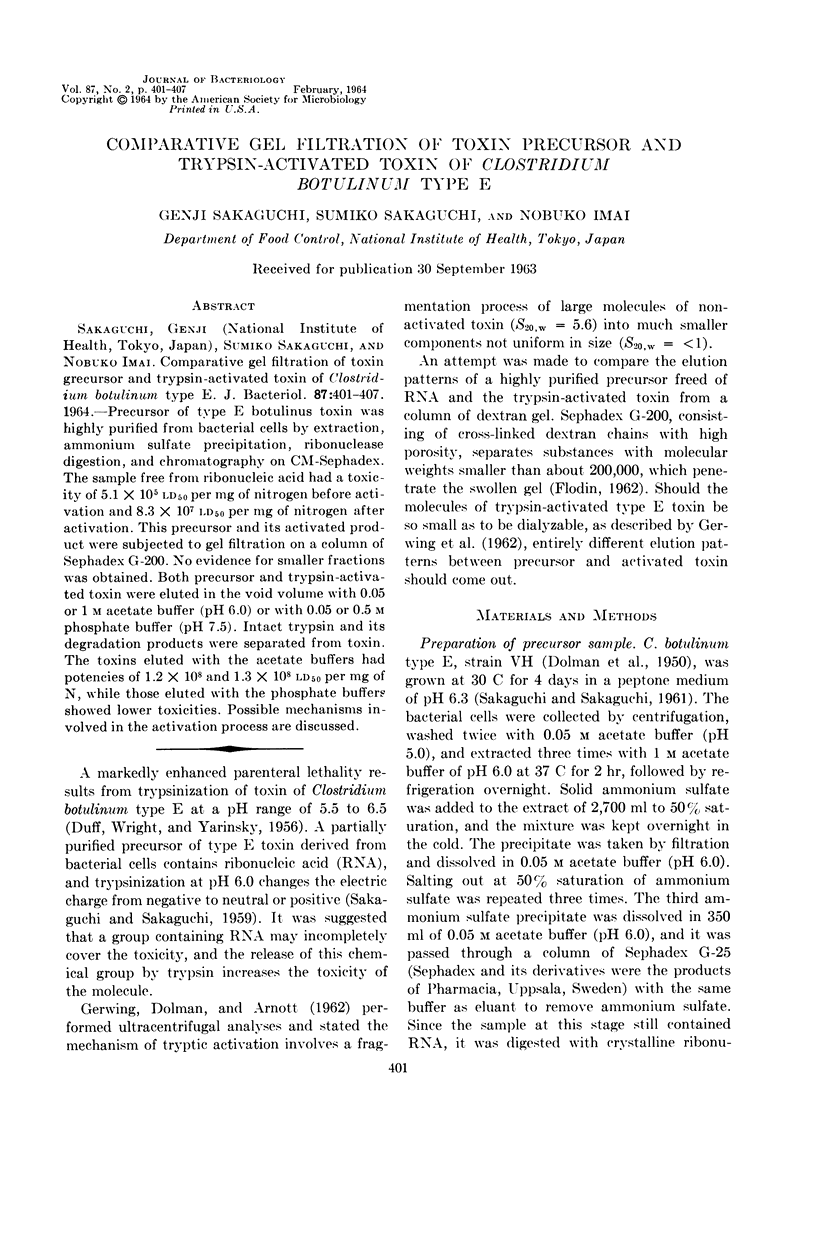
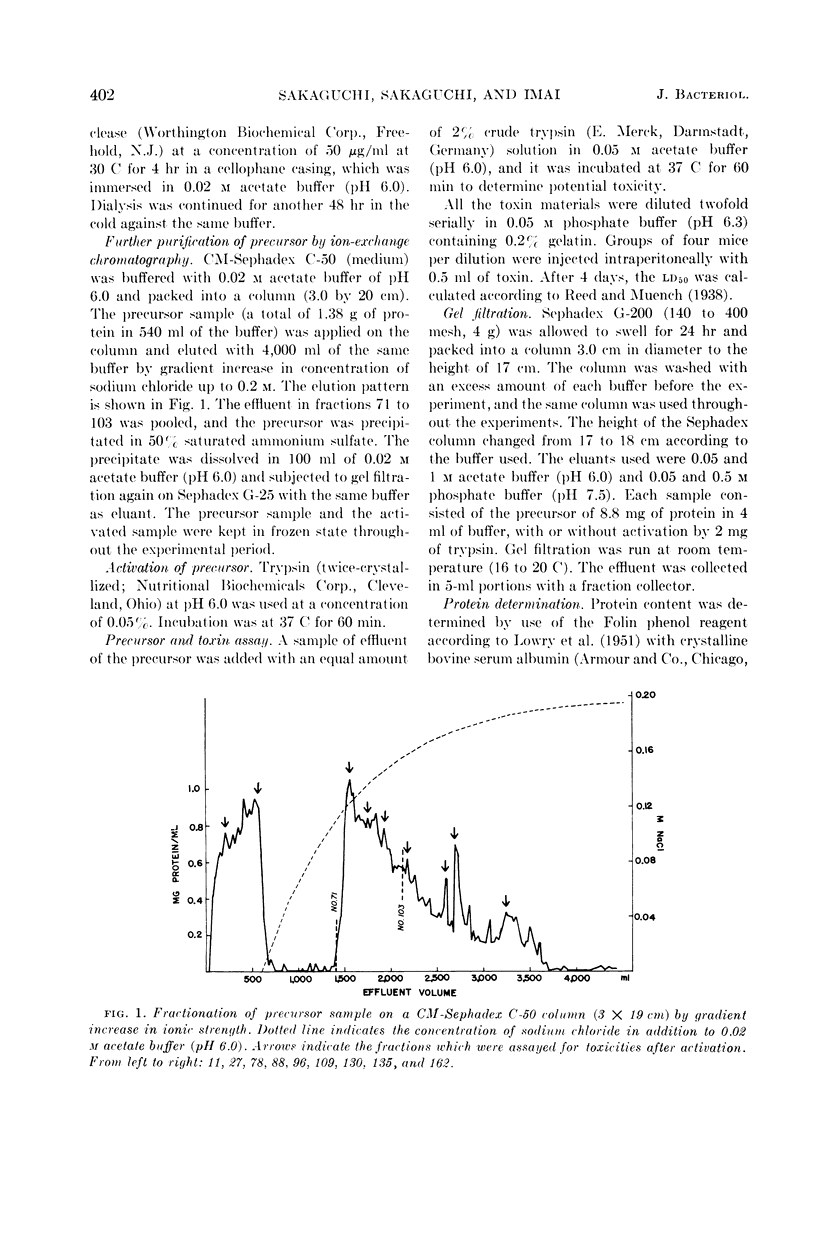
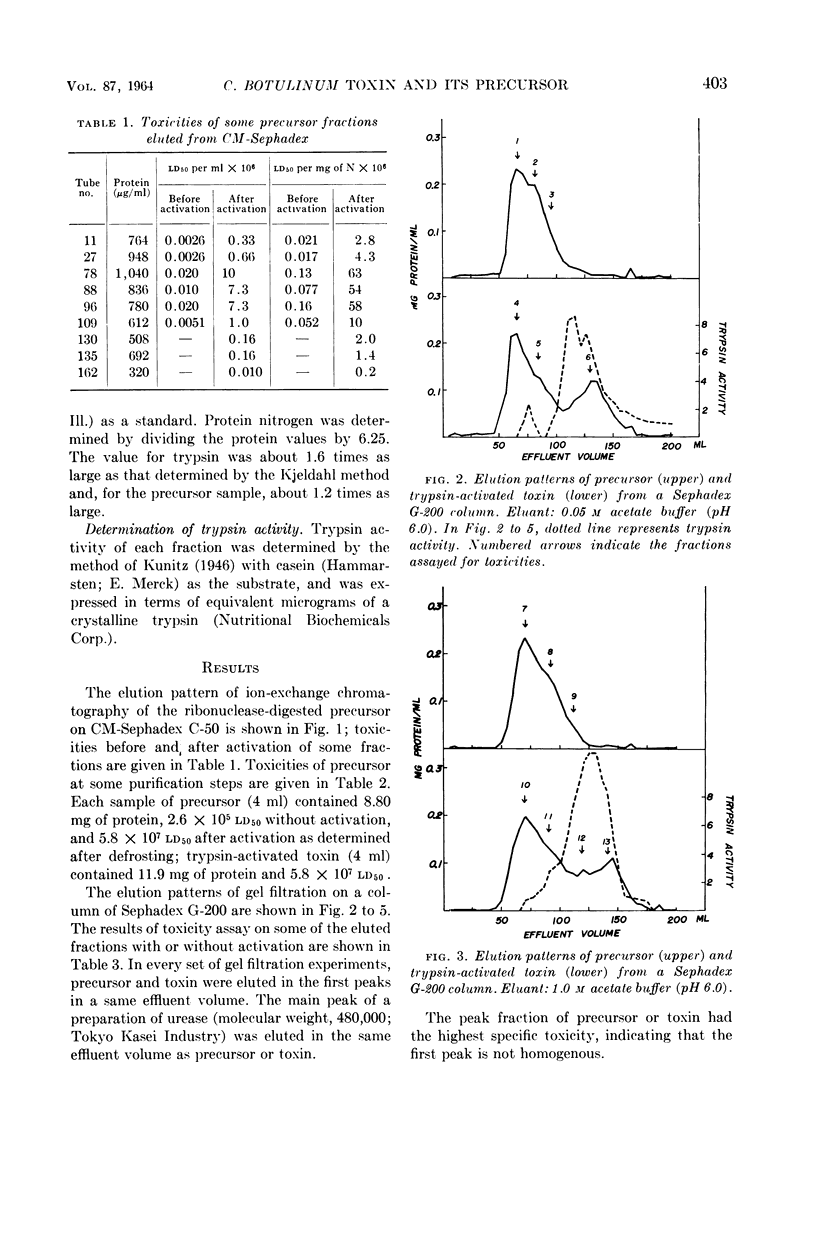
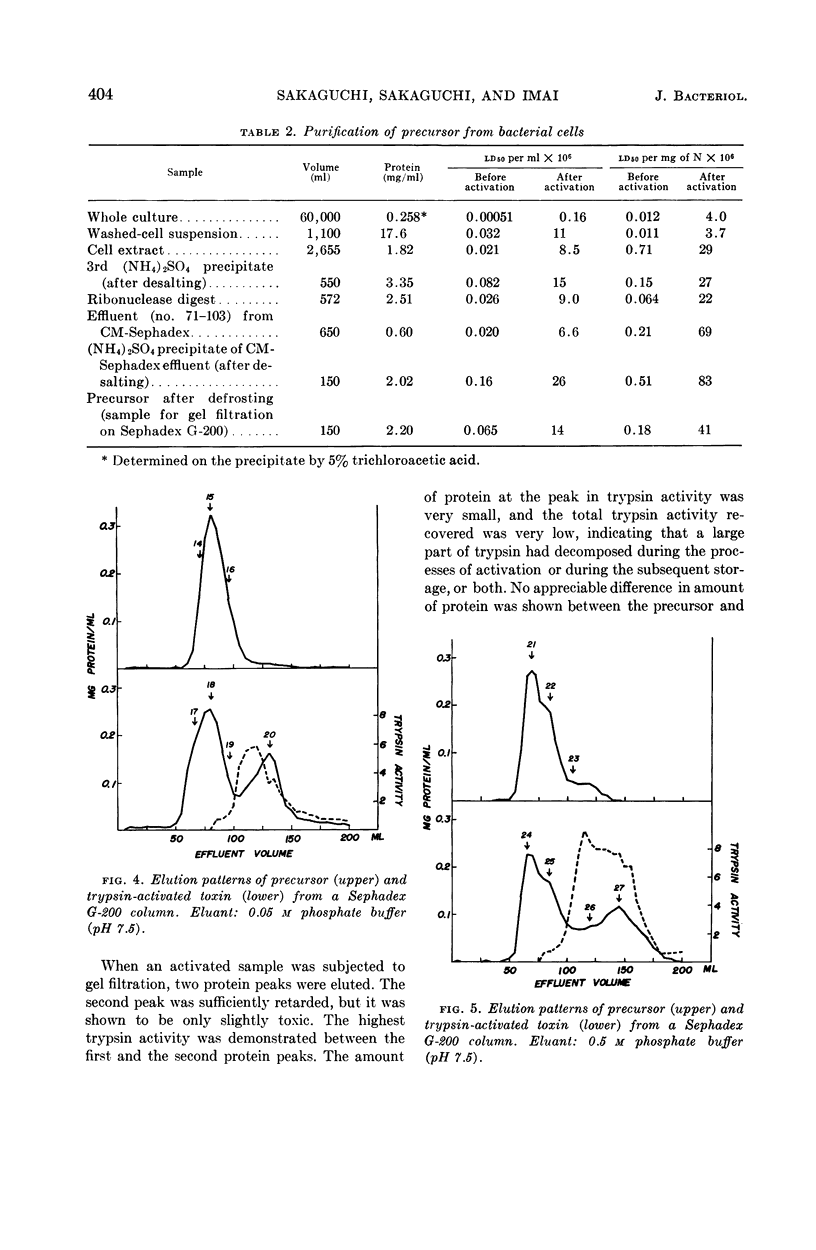
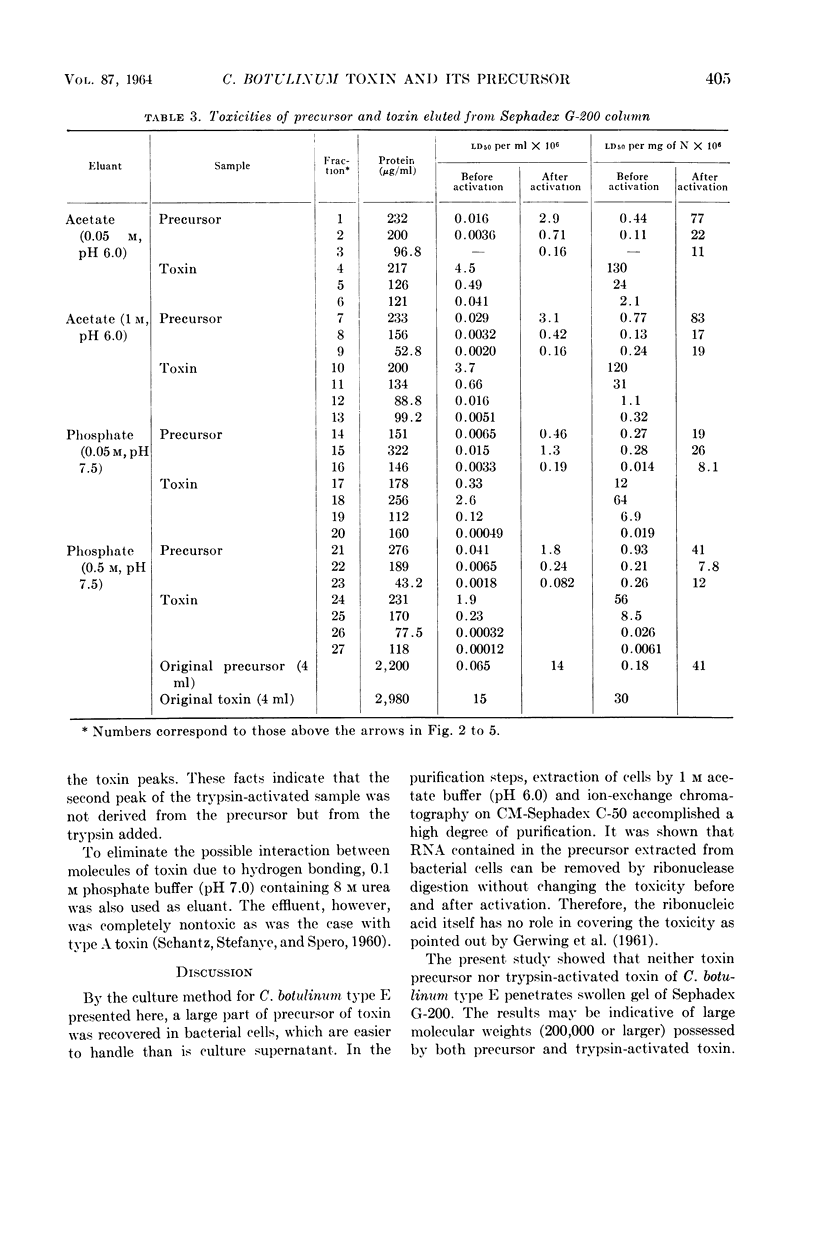
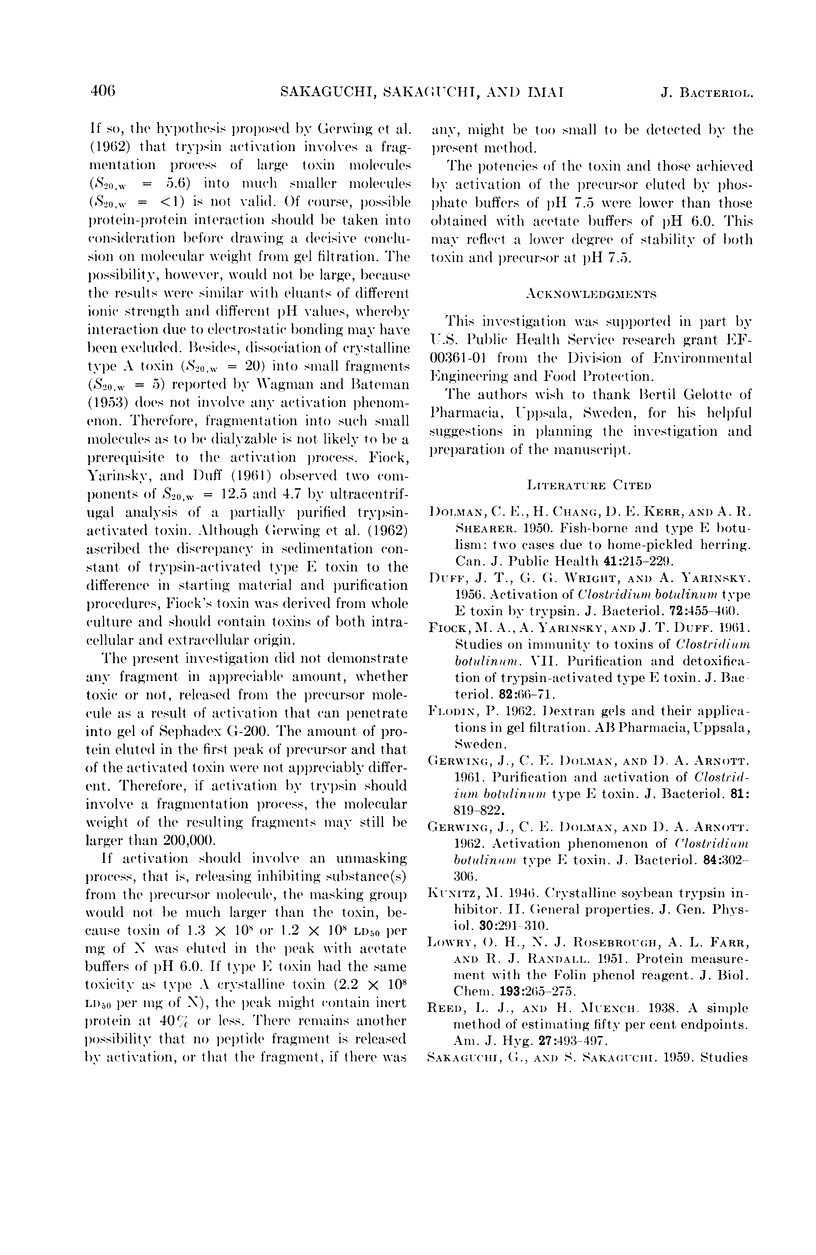
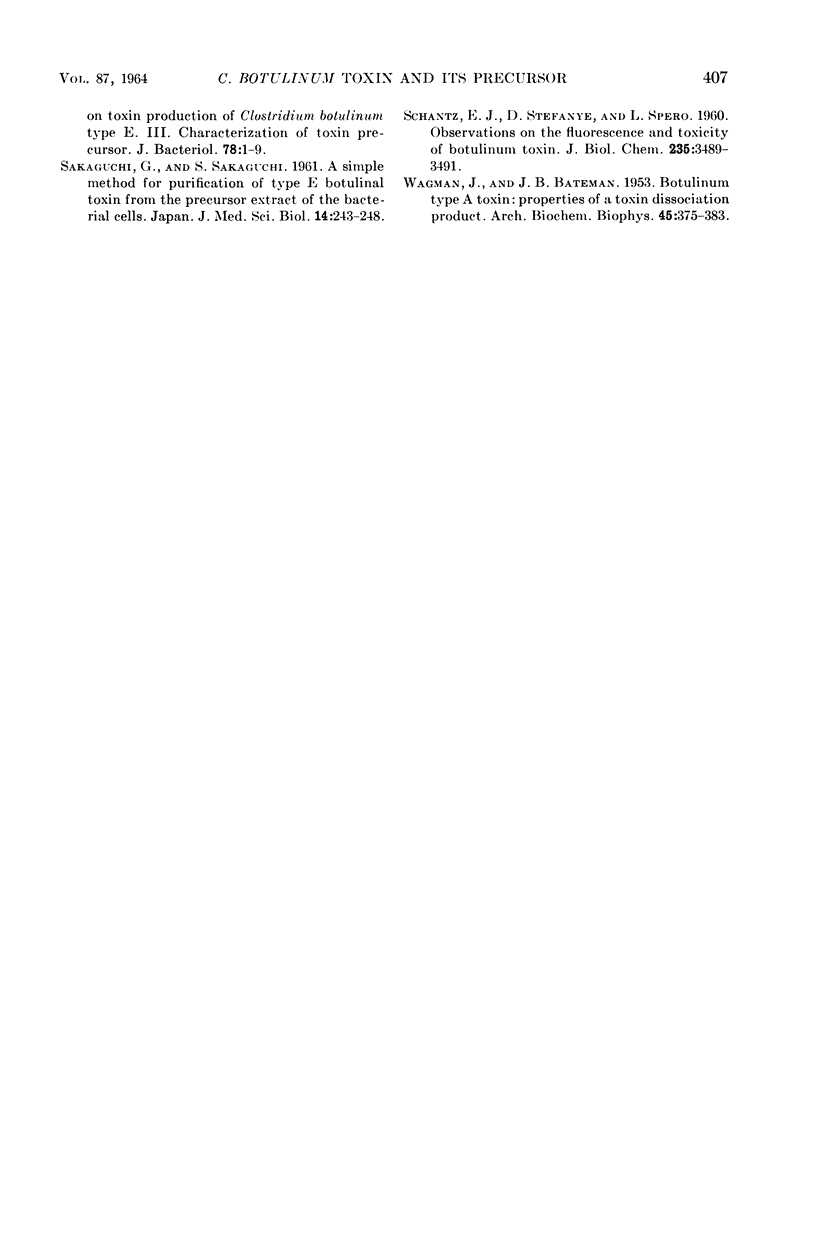
Selected References
These references are in PubMed. This may not be the complete list of references from this article.
- DOLMAN C. E., CHANG H., KERR D. E., SHEARER A. R. Fish-borne and type E botulism: two cases due to home-pickled herring. Can J Public Health. 1950 Jun;41(6):215–229. [PubMed] [Google Scholar]
- DUFF J. T., WRIGHT G. G., YARINSKY A. Activation of Clostridium botulinum type E toxin by trypsin. J Bacteriol. 1956 Oct;72(4):455–460. doi: 10.1128/jb.72.4.455-460.1956. [DOI] [PMC free article] [PubMed] [Google Scholar]
- GERWING J., DOLMAN C. E., ARNOTT D. A. Activation phenomenon of Clostridium botulinum type E toxin. J Bacteriol. 1962 Aug;84:302–306. doi: 10.1128/jb.84.2.302-306.1962. [DOI] [PMC free article] [PubMed] [Google Scholar]
- LOWRY O. H., ROSEBROUGH N. J., FARR A. L., RANDALL R. J. Protein measurement with the Folin phenol reagent. J Biol Chem. 1951 Nov;193(1):265–275. [PubMed] [Google Scholar]
- SAKAGUCHI G., SAKAGUCHI S. A simple method for purification of type E botulinal toxin from the precursor extract of the bacterial cells. Jpn J Med Sci Biol. 1961 Dec;14:243–243. doi: 10.7883/yoken1952.14.243. [DOI] [PubMed] [Google Scholar]
- SCHANTZ E. J., STEFANYE D., SPERO L. Observations on the fluorescence and toxicity of botulinum toxin. J Biol Chem. 1960 Dec;235:3489–3491. [PubMed] [Google Scholar]
- WAGMAN J., BATEMAN J. B. Botulinum type A toxin: properties of a toxic dissociation product. Arch Biochem Biophys. 1953 Aug;45(2):375–383. doi: 10.1016/s0003-9861(53)80014-7. [DOI] [PubMed] [Google Scholar]


